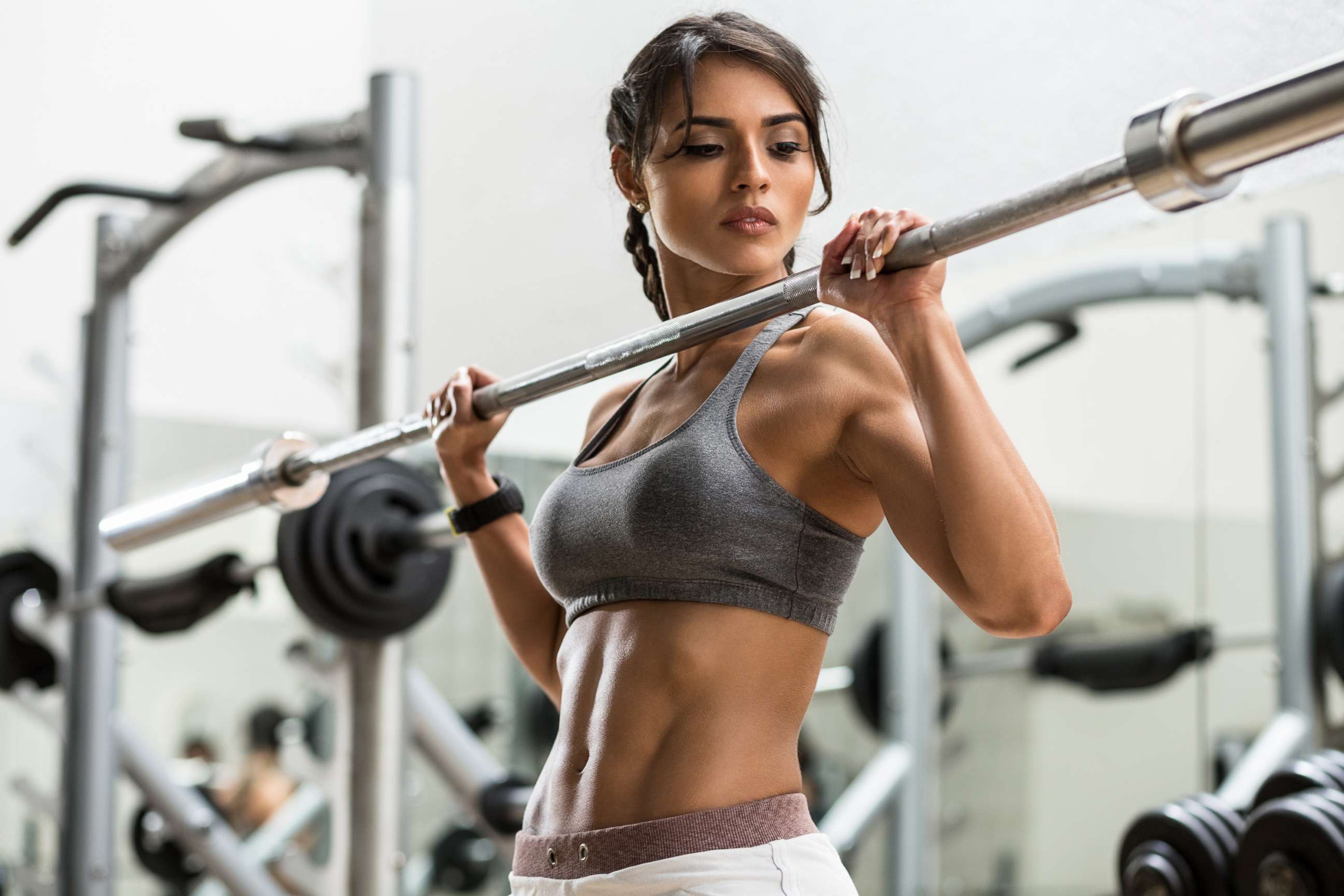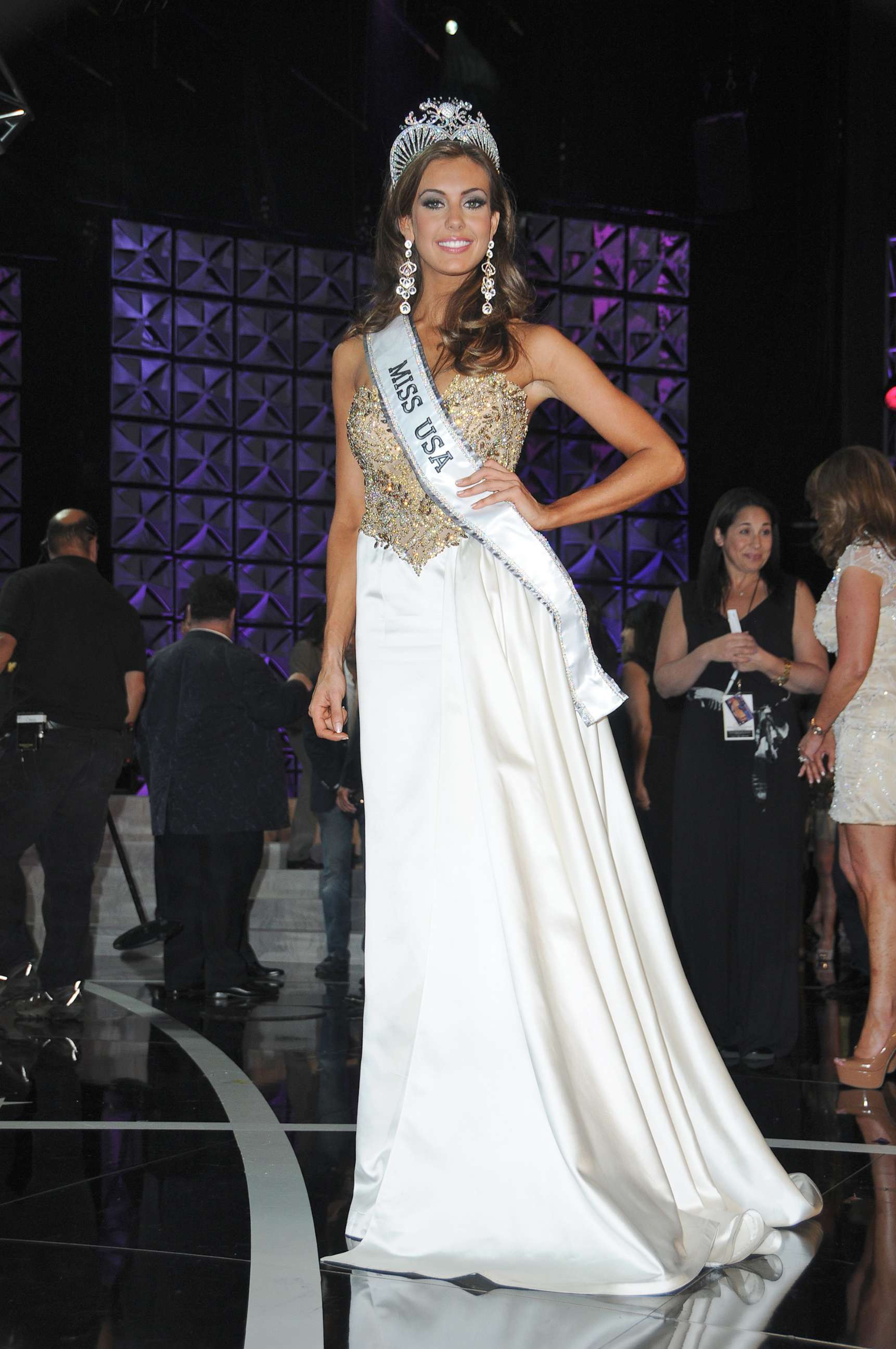What's the new ideal female body type? Now it's thin and muscular, research shows
Social media could be sparking the change for women, expert says.
When the saying, “strong is the new skinny” exploded on social media, it seemed like a positive step forward for female body image.
However, women may now feel the pressure to be both strong and skinny, fueled by unrealistic body images in the media, including social media, research shows.
“I think the standard for female beauty has always been unrealistically thin,” said Brooke Whisenhunt, a psychology professor at Missouri State University whose research specializes in obesity, eating disorders and body image.

“Now I feel like we’ve added another variable that is difficult for most people to obtain,” she said. “We’ve made our ideal less realistic for women over time.”
Roles in action and superhero movies have seen stars from Alicia Vikander to Brie Larson transforming their already-thin figures into muscular powerhouses.
Strength training was the most popular fitness genre in the U.S. in 2017, according to ClassPass, a global company that offers access to 8,500 fitness studios.
There's also no shortage on social media of posts from women showing off their figures, and the lengths they went to obtain them, whether in the gym or in the kitchen. Instagram shows more than 60 million posts with the hashtags #fitspo and #fitspiration at this moment.
Whisehunt and a former student, Frances Bozsik, gathered nearly 150 female undergraduate students to see if the women were aware of more female models featuring thin but muscular physiques and whether they wanted to achieve that look too.
Half of the nearly 150 undergraduates were shown images of Miss USA pageant winners from 1999 to 2013 and rated them on muscularity, thinness and attractiveness.
The undergraduates’ ratings showed that both muscularity and thinness of the pageant winners increased as the years wore on, according to Whisenhunt.

The other half of the nearly 150 undergraduates were shown two different versions of the same photo of a model. In one image the model was left as is. The other image was digitally enhanced to remove muscles from the model's frame.
The undergraduates found the thin, muscular image of the model more attractive, Whisenhunt said.
Bozsik, now a Ph.D. candidate at University of Missouri-Kansas City, conducted the research nearly two years ago as part of her master’s thesis. It was published in January in the research journal Sex Roles.
"It seems as though the quest for a toned body adds just one more thing to strive for -- another layer of pressure for women," Bozsik, who was not available for comment, wrote this week about her research. "Not only do they need to restrict caloric intake, but they also need to add a muscle-building exercise routine."
Whisehunt said their research did not attempt to answer why or how the feminine ideal appeared to shift.
“My own hypothesis is the media, including social media, is creating increased pressure for women to not only be thin but to be fit as well," she said. "The reality is that our thin ideal has gotten thinner. We have an underweight ideal that is now muscular.”
The idea of women pursuing a more muscular, stronger physique would be healthy if it was not combined with a level of "thin" that has long been almost impossible to achieve for most women, according to Whisenhunt.
Kristin Freeberg, of Tampa, is a 25-year-old online personal trainer.
She said her female clients are no longer "scared" to try strength training. Though they usually start it to try to shape a certain body feature, they stick with it for reasons beyond the superficial, according to Freeberg.
"Once they start doing it, they tend to get more into it because it’s fun to try to challenge yourself more," she said. "They realize it’s a good mental thing you’re doing for yourself and it helps to relieve stress."
In their research, Whisenhunt and Bozsik observed that many social media fitness posts by women focus on achieving a certain look, rather than health.
Switching that mindset among women can be part of the solution, according to Whisenhunt.
“We need to be talking about motivation for exercise as less about how I can make my body look, to what I can do to make my body healthy,” she said. “Women worry more about calories burned on the treadmill than cardiovascular health.”
Freeberg, who has more than 11,000 followers on Instagram, said she challenges her clients and her social media followers to "love yourself no matter what."
"My strong body is going to look different than your strong body," she said. "I tell my clients to focus on their health more than what their body looks like. If you’re eating right and taking care of your health, your body is going to take care of itself."
Freeberg added that she has also not seen extreme pressure to be both thin and muscular among the people she interacts with online.
"From my interaction with social media, people are more interested in being strong now rather than focusing on being super skinny," she said. "They're going for the strong look rather than the extremely thin look that models are."
Parents and educators can also help give girls a realistic body image by educating them on “media literacy,” Whisenhunt recommends.
“In the same way we used to talk about Photoshopping thinness, we need to talk about muscularity and how most likely the images flashed onto our screen are not real, including social media,” she said. “Chances are they took many, many pictures to pick the one that looks the best.”
She added, “It’s about challenging the assumption that everyone looks like that naturally, or that I could look like that if I worked hard enough.”
Tell us what you think. Is there new pressure for women to be both strong and skinny? Are #fitspo and #fitspiration posts on social media inspiring or damaging? Tweet us @GMA!




